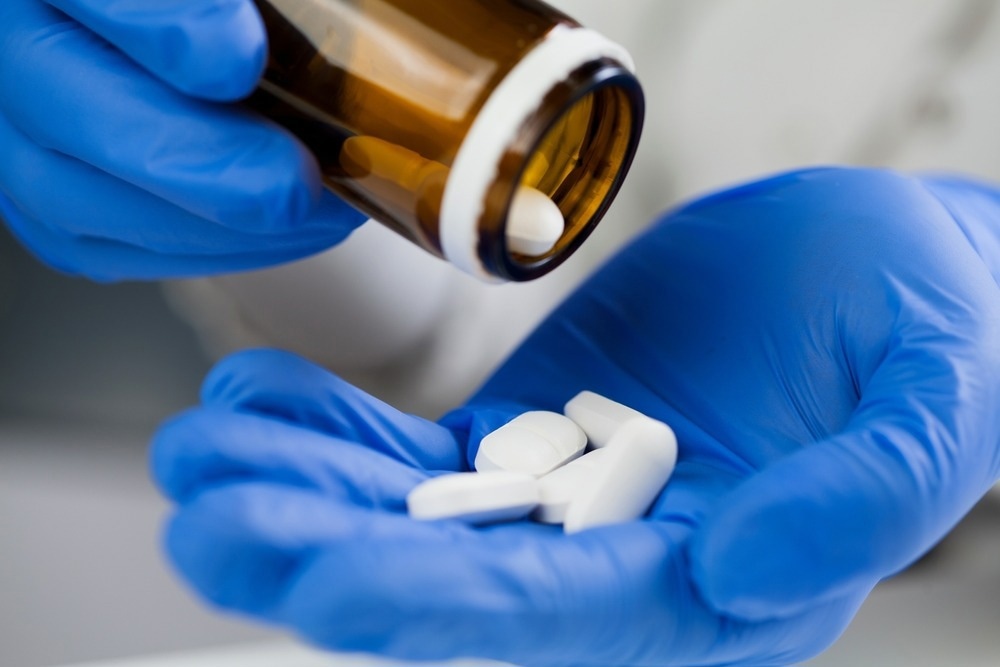In a recent study published in JAMA Network Open, researchers evaluated the incidence of coronavirus disease 2019 (COVID-19) rebound among SARS-CoV-2 (severe acute respiratory syndrome coronavirus 2)-positive patients treated with oral antiviral drugs such as nirmatrelvir-ritonavir combination and molnupiravir. They also described the clinical outcomes among community-dwelling patients hospitalized due to the viral rebound of SARS-CoV-2 infections.

Background
In 2022, Hong Kong experienced the fifth COVID-19 wave. During the period of Omicron variant predominance, molnupiravir and nirmatrelvir-ritonavir were authorized for treating individuals with several comorbid conditions with multiple concomitant medications. The antivirals were reportedly effective in improving severity outcomes such as hospitalizations and deaths.
However, SARS-CoV-2 infection rebound, although mild, was reported among a few individuals prescribed nirmatrelvir-ritonavir treatment. Data pertaining to whether the COVID-19 rebound would be observed in untreated or molnupiravir-treated COVID-19 patients are limited. According to the CDC (Centers for Disease Control and Prevention), such a viral rebound may be a part of an individual’s natural COVID-19 history, irrespective of the antiviral prescribed. Therefore, the CDC did not recommend additional treatments for the rebound.
About the study
In the present retrospective cohort study, researchers evaluated the incidence of COVID-19 rebound post-treatment with molnupiravir and nirmatrelvir-ritonavir among community-dwelling individuals. They investigated whether the rebound was related to the clinical outcome of COVID-19.
Territory-wide data were obtained from the CDARS (clinical data analysis and reporting system), managed by the hospital authority of Hong Kong. Initially, 41,255 COVID-19 patients hospitalized between 1 January 2022 and 31 March 2022 were identified, of which only 12,629 individuals admitted to public-type hospitals, having Ct (cycle threshold) values determined ≥3.0 times, formed the study cohort. The study covered >95% of inpatient care settings for COVID-19 patients.
Follow-up assessments were performed until the study participants developed the study endpoint, died, or until the date up to which data were retrieved for the analysis, i.e., 31 July 2022, or till 30.0 follow-up days, the event that occurred first. The prime study exposure was nirmatrelvir-ritonavir or molnupiravir treatment. The primary study endpoint was the COVID-19 rebound, which was described as an initial Ct value of >40 lowering to ≤40. The secondary study endpoints were cycle threshold values of >36, lowering to ≤36, and deaths due to any cause.
Results
Among 12,629 COVID-19 patients, the average age was 65 years, and 53% (n=6,624) were men. In total, 93% (n=11,688) of the study participants did not use oral antivirals, six percent (n=746) of the patients used molnupiravir, and two percent (n=195) of the participants used nirmatrelvir-ritonavir.
In comparison to antiviral drug non-users, individuals treated with the antiviral drugs were elder, suffered from more comorbid conditions, and fewer of them had received full COVID-19 vaccination.
The median value for the number of PCR (polymerase chain reaction) analysis reports among individuals in all three groups was four. The average baseline Ct values were marginally greater among patients under nirmatrelvir-ritonavir treatment (22) compared to those under molnupiravir treatment (21) and those who did not use antiviral medications (21).
COVID-19 rebound was observed among six patients treated with molnupiravir (one percent), two patients treated with nirmatrelvir-ritonavir (one percent), and 68 individuals who were treated with none of the antiviral medications (one percent). Most of the COVID-19 rebounds were observed 2.0 days to 5.0 days post-completion of the antiviral treatment course.
Among 76 participants who experienced the COVID-19 rebound, 12 out of 68 untreated individuals, one out of six individuals treated with molnupiravir, and none of those treated with nirmatrelvir-ritonavir died due to the SARS-CoV-2 infection. In the case of cycle threshold values exceeding 36 lowering to ≤36, such COVID-19 fluctuations were observed among 34 patients treated with molnupiravir (five percent), nine patients treated with nirmatrelvir-ritonavir (five percent), and 509 indiviudals treated with none of the medications (four percent).
The overall case fatality rate (CFR) among COVID-19 patients experiencing the rebound was 17.0%, such that CFRs for molnupiravir-treated individuals, nirmatrelvir-ritonavir-treated individuals, and those treated with none of the medications were 17%, 0.0%, and 18.0%, respectively. Further, individuals who did not use any antivirals and experienced a COVID-19 rebound showed greater CFR rates (18.0%) compared to those without COVID-19 rebound (ten percent).
On the contrary, individuals who received antiviral medications and experienced a COVID-19 rebound (13.0%) did not show greater CFR rates than those who did not experience a COVID-19 rebound (13.0%). Among COVID-19 patients with viral fluctuations (n=552), 48 individuals out of 509 non-antiviral users and five out of 34 patients treated with molnupiravir died due to SARS-CoV-2 infections, whereas one individual out of nine of them treated with nirmatrelvir-ritonavir died due to pancreatic cancer rather than SARS-CoV-2 infection.
The slight elevation in CFR rates among individuals not treated with the antiviral medications may be related to the limited sample population of SARS-CoV-2-positive patients experiencing COVID-19 rebound.
Conclusion
Overall, the study findings showed that COVID-19 rebound was not common among patients treated with nirmatrelvir-ritonavir or molnupiravir and did not increase the risk of death. The findings indicated that orally administered antiviral drugs must be included in the therapeutic landscape of COVID-19 and administered during the initial period of SARS-CoV-2 infections.
- Wong, G. et al. (2022) "Incidence of Viral Rebound After Treatment With Nirmatrelvir-Ritonavir and Molnupiravir", JAMA Network Open, 5(12), p. e2245086. doi: 10.1001/jamanetworkopen.2022.45086. https://jamanetwork.com/journals/jamanetworkopen/fullarticle/2799218
Posted in: Medical Science News | Medical Research News | Disease/Infection News
Tags: Antiviral Drug, Cancer, Coronavirus, Coronavirus Disease COVID-19, covid-19, CT, Drugs, Hospital, Omicron, Pancreatic Cancer, Polymerase, Polymerase Chain Reaction, Respiratory, Ritonavir, SARS, SARS-CoV-2, Severe Acute Respiratory, Severe Acute Respiratory Syndrome, Syndrome

Written by
Pooja Toshniwal Paharia
Dr. based clinical-radiological diagnosis and management of oral lesions and conditions and associated maxillofacial disorders.
Source: Read Full Article
